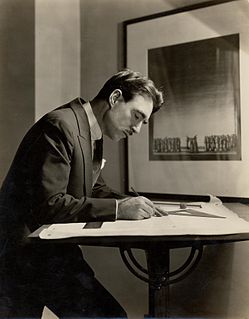 W
WStagecraft is a technical aspect of theatrical, film, and video production. It includes constructing and rigging scenery; hanging and focusing of lighting; design and procurement of costumes; make-up; stage management; audio engineering; and procedures of props. Stagecraft is distinct from the wider umbrella term of scenography. Considered a technical rather than an artistic field, it is primarily the practical implementation of a scenic designer's artistic vision.
 W
WA black box theater is a simple performance space, that varies in size, and is usually a square room with black walls and a flat floor. The simplicity of the space is used to create a flexible stage and audience interaction. The black box is a relatively recent innovation in theatre.
 W
WIn stagecraft, a c-clamp can refer to a number of different pieces of hardware, depending on its intended use.
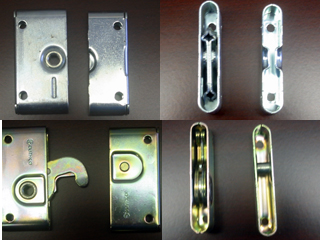 W
WCoffin lock is a slang term for a blind panel connector often used in scenic construction to join together stage decks or scenery in a butt joint. These are two part connectors that draw together and lock. The two most common types are the cam and acceptor and more traditional hook and pin version. These devices generally use a hex key to operate the locking mechanism via a small diameter hole either through the face or rear of the panel. When locked, the considerable mechanical advantage offered by the cam or hook holds the panels tightly together. Coffin locks can be installed directly into a mortise cut into each panel for total concealment except for the locking hole or mounted to the rear of the panels. Many small theatres use stock platforms with coffin locks built into the frames.
 W
WThe control booth, control room, lighting box, technical booth, tech booth, or just booth used by television, film or theatrical technicians is the area designated for the operation of technical equipment, lighting controls and sound board. Often one or two followspots may be located in the booth as well. In a theater, it is generally an enclosed space with a large sliding window with a good view of the stage centered in the back of the house. It may be on the ground floor or at the balcony level. In a film or television production, it might be in a trailer or other space near the studio.
 W
WCostume coordination is a method of dressing actors, employees or a person or group for theatrical productions and any venue requiring a fully realized character. It consists of pulling or renting existing stock clothing and costumes, altering them as needed to be used as stage clothes in a theatrical production, oversee their use, cleaning and eventual return to storage or rental company. Just as with costume design, the costume coordinator creates the overall appearance of the characters, but with the use of on hand items, including accessories. Sometimes coordinators may have a small budget to augment the existing stock or alter it for production needs.
 W
WCostume design is the creation of clothing for the overall appearance of a character or performer. Costume may refer to the style of dress particular to a nation, a class, or a period. In many cases, it may contribute to the fullness of the artistic, visual world which is unique to a particular theatrical or cinematic production. The most basic designs are produced to denote status, provide protection or modesty, or provide visual interest to a character. Costumes may be for a theater, cinema, or musical performance but may not be limited to such. Costume design should not be confused with costume coordination which merely involves altering existing clothing, although both create stage clothes.
 W
WA fly system, or theatrical rigging system, is a system of rope lines, blocks (pulleys), counterweights and related devices within a theater that enables a stage crew to fly (hoist) quickly, quietly and safely components such as curtains, lights, scenery, stage effects and, sometimes, people. Systems are typically designed to fly components between clear view of the audience and out of view, into the large opening, known as the fly loft, above the stage.
 W
WFoam latex or latex foam rubber is a lightweight form of latex containing bubbles known as cells, created from liquid latex. The foam is generally created though the Dunlop or Talalay process in which a liquid latex is foamed and then cured in a mold to extract the foam.
 W
WA fog machine, fog generator, or smoke machine is a device that emits a dense vapor that appears similar to fog or smoke. This artificial fog is most commonly used in professional entertainment applications, but smaller, more affordable fog machines are becoming common for personal use. Fog machines can also be found in use in a variety of industrial, training, and some military applications. Typically, fog is created by vaporizing proprietary water and glycol-based or glycerin-based fluids or through the atomization of mineral oil. This fluid vaporizes or atomizes inside the fog machine. Upon exiting the fog machine and mixing with cooler outside air the vapor condenses, resulting in a thick visible fog.
 W
WA footlight is a theatrical lighting device arranged to illuminate a stage from the front edge of the stage floor in front of the curtain. Originally set in a row of hooded individual enclosures, electric footlights are presently set in troughs across the edge of the stage so that they are not visible to the audience. An indirect footlight uses a light aimed at a reflecting surface to diffuse the illumination.
 W
WGaffer tape is a heavy cotton cloth pressure-sensitive tape with strong adhesive and tensile properties. It is widely used in theatre, photography, film, radio and television production, and industrial staging work.
 W
WThe hanamichi (花道) is an extra stage section used in Japanese kabuki theater. It is a long, raised platform, running left of centre to the stage through the audience, connecting to the main stage.
 W
WHaze machines, or haze generators, are effects machines similar to fog machines, designed to produce an unobtrusive, homogeneous clouds suspended in the air intended primarily to make light beams visible or create a subtle diffusion.
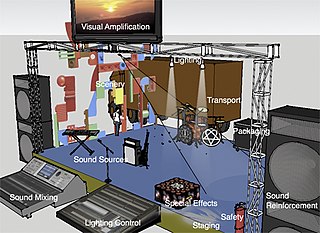 W
WLive event support includes staging, scenery, mechanicals, sound, lighting, video, special effects, transport, packaging, communications, costume and makeup for live performance events including theater, music, dance, and opera. They all share the same goal: to convince live audience members that there is no better place that they could be at the moment. This is achieved through establishing a bond between performer and audience. Live performance events tend to use visual scenery, lighting, costume amplification and a shorter history of visual projection and sound amplification reinforcement.
 W
WLive sound mixing is the blending of multiple sound sources by an audio engineer using a mixing console or software. Sounds that are mixed include those from instruments and voices which are picked up by microphones and pre-recorded material, such as songs on CD or a digital audio player. Individual sources are typically equalised to adjust the bass and treble response and routed to effect processors to ultimately be amplified and reproduced via a loudspeaker system. The live sound engineer listens and balances the various audio sources in a way that best suits the needs of the event.
 W
WA make-up or makeup artist (MUA) is an artist whose medium is the human body, applying makeup and prosthetics on others for theatre, television, film, fashion, magazines and other similar productions including all aspects of the modeling industry. Awards given for this profession in the entertainment industry include the Academy Award for Best Makeup and Hairstyling, and entertainment industry awards such as the Emmy Awards, and the Golden Globes. In some countries professional licenses are required by agencies in order for them to hire the MUA. Bigger production companies have in-house makeup artists on their payroll although most MUA's generally are freelance and their times remain flexible depending on the projects.
 W
WThe Nordic Institute of Stage and Studio is a private college located in Oslo, Norway. It focuses on subjects related to stage, studio, film and television, and is one of the largest educational centers in the Nordic countries with this specific theme.
 W
WJoseph Stanislaus Ostoja-Kotkowski AM, FRSA was best known for his ground-breaking work in chromasonics, laser kinetics and 'sound and image' productions. He earned recognition in Australia and overseas for his pioneering work in laser sound and image technology. His work included painting, photography, film-making, theatre design, fabric design, murals, kinetic and static sculpture, stained glass, vitreous enamel murals, op-collages, computer graphics, and laser art. Ostoja flourished between 1940 and 1994.
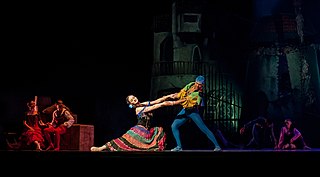 W
WA performance is an act of staging or presenting a play, concert, or other form of entertainment. It is also defined as the action or process of carrying out or accomplishing an action, task, or function.
 W
W W
WA proscenium is the metaphorical vertical plane of space in a theatre, usually surrounded on the top and sides by a physical proscenium arch and on the bottom by the stage floor itself, which serves as the frame into which the audience observes from a more or less unified angle the events taking place upon the stage during a theatrical performance. The concept of the fourth wall of the theatre stage space that faces the audience is essentially the same.
 W
WProsthetic makeup is the process of using prosthetic sculpting, molding and casting techniques to create advanced cosmetic effects. Prosthetic makeup goes back to the beginning of film making with A Trip to the Moon, a 1902 French adventure short film directed by Georges Méliès where the man on the moon effect was accomplished using a combination of makeup and a prosthetic type mask with added pastes. The makeup artist Jack Pierce was another early Hollywood make-up artist, best remembered for creating the iconic makeup worn by Boris Karloff in Frankenstein, his makeup for the Wolfman, and more. Modern prosthetic makeup was revolutionized by John Chambers, whose work can be seen in Planet of the Apes, as well as Dick Smith's work in Little Big Man, Stan Winston in the Terminator series, and Rob Bottin in The Thing.
 W
WA rehearsal is an activity in the performing arts that occurs as preparation for a performance in music, theatre, dance and related arts, such as opera, musical theatre and film production. It is undertaken as a form of practising, to ensure that all details of the subsequent performance are adequately prepared and coordinated. The term rehearsal typically refers to ensemble activities undertaken by a group of people. For example, when a musician is preparing a piano concerto in their music studio, this is called practising, but when they practice it with an orchestra, this is called a rehearsal. The music rehearsal takes place in a music rehearsal space.
 W
WA revolving auditorium is a mechanically controlled seating area within a theatre which can be rotated in order to manipulate the change of scenery and stage sets during the performance. Revolving auditoriums are favoured by open-air theatres in particular, because they are ideally suited for the use of natural scenery as an integral part of the set.
 W
WA scenery wagon, also known as a stage wagon, is a mobile platform that is used to support and transport movable, three-dimensional theatrical scenery on a theater stage. In most cases, the scenery is constructed on top of the wagon such that the wagon, and the scenery it supports, forms a single, integrated structure. Heavy duty casters are mounted to the underside of the platform so that the entire assembly can be quickly moved onstage or offstage, so as to facilitate rapid scenery changes during live productions. Scenery wagons are built in a wide range of sizes, ranging from less than one square foot up to the size of the playing area of the stage.
 W
WScenic design is the creation of theatrical, as well as film or television scenery. Scenic designers come from a variety of artistic backgrounds, but in recent years, are mostly trained professionals, holding a B.F.A. or M.F.A. degrees in theater arts. Scenic designers design sets and scenery that aim to support the overall artistic goals of the production. There has been a consideration that scenic design is also production design; however, more accurately, it is a part of the visual production of a film or television.
 W
WShow control is the use of automation technology to link together and operate multiple entertainment control systems in a coordinated manner. It is distinguished from an entertainment control system, which is specific to a single theatrical department, system or effect, one which coordinates elements within a single entertainment discipline such as lighting, sound, video, rigging, or pyrotechnics. A typical entertainment control system would be lighting control. An example of show control would be linking a video segment with a number of lighting cues, or having a sound track trigger animatronic movements -- or all of these combined. Shows with or without live actors can almost invariably incorporate entertainment control technology and usually benefit from show control to operate these subsystems independently, simultaneously, or in rapid succession.
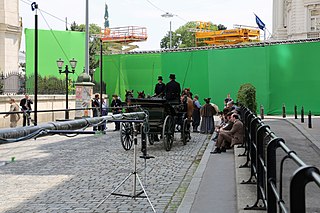 W
WSpecial effects are illusions or visual tricks used in the theatre, film, television, video game, and simulator industries to simulate the imagined events in a story or virtual world.
 W
WIn stagecraft, a spike is a marking, usually made with a piece of tape, put on or around the stage. This marking is used to show the correct position for set pieces, furniture, actors and other items which move during the course of a performance and are required to stop or be placed in a specific location.
 W
WIn theatre and performing arts, the stage is a designated space for the performance of productions. The stage serves as a space for actors or performers and a focal point for the audience. As an architectural feature, the stage may consist of a platform or series of platforms. In some cases, these may be temporary or adjustable but in theaters and other buildings devoted to such productions, the stage is often a permanent feature.
 W
WStage fright or performance anxiety is the anxiety, fear, or persistent phobia which may be aroused in an individual by the requirement to perform in front of an audience, whether actually or potentially. Performing in front of an unknown audience can cause significantly more anxiety than performing in front of familiar faces. In some cases, the person will suffer no such fright from this, while they might suffer from not knowing who they're performing to. In the context of public speaking, this may precede or accompany participation in any activity involving public self-presentation. In some cases stage fright may be a part of a larger pattern of social phobia, but many people experience stage fright without any wider problems. Quite often, stage fright arises in a mere anticipation of a performance, often a long time ahead. It has numerous manifestations: stuttering, tachycardia, tremor in the hands and legs, sweaty hands, facial nerve tics, dry mouth, and dizziness.
 W
WStage management is a broad field that is generally defined as the practice of organization and coordination of an event or theatrical production. Stage management may encompass a variety of activities including the overseeing of the rehearsal process and coordinating communications among various production teams and personnel. Stage management requires a general understanding of all aspects of production and offers organisational support to ensure the process runs smoothly and efficiently.
 W
WA theatre director or stage director is a professional in the theatre field who oversees and orchestrates the mounting of a theatre production such as a play, opera, dance, drama, musical theatre performance, etc. by unifying various endeavors and aspects of production. The director's function is to ensure the quality and completeness of theatre production and to lead the members of the creative team into realizing their artistic vision for it. The director thereby collaborates with a team of creative individuals and other staff to coordinate research and work on all the aspects of the production which includes the Technical and the Performance aspects. The technical aspects include: stagecraft, costume design, theatrical properties (props), lighting design, set design, and sound design for the production. The performance aspects include: acting, dance, orchestra, chants, and stage combat.
 W
WA prop, formally known as (theatrical) property, is an object used on stage or screen by actors during a performance or screen production. In practical terms, a prop is considered to be anything movable or portable on a stage or a set, distinct from the actors, scenery, costumes, and electrical equipment. Consumable food items appearing in the production are also considered props.
 W
WTheatrical scenery is that which is used as a setting for a theatrical production. Scenery may be just about anything, from a single chair to an elaborately re-created street, no matter how large or how small, whether the item was custom-made or is the genuine item, appropriated for theatrical use.
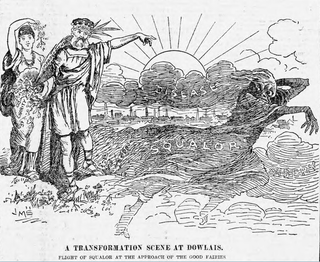 W
WThe transformation scene is a theatrical convention of metamorphosis, in which a character, group of characters, stage properties or scenery undergo visible change. Transformation scenes were already standard in the European theatrical tradition with the masques of the 17th century. They may rely on both stage machinery and lighting effects for their dramatic impact.
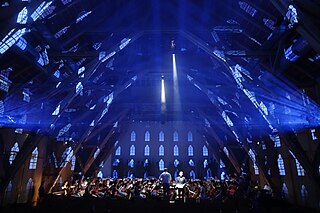 W
WVideo design or projection design is a creative field of stagecraft. It is concerned with the creation and integration of film, motion graphics and live camera feed into the fields of theatre, opera, dance, fashion shows, concerts and other live events. Video design has only recently gained recognition as a separate creative field. For instance, United Scenic Artists' Local 829, the union that represents designers and scenic artists in the US entertainment industry, only added the Projection Designer membership category in 2007. Prior to this, the responsibilities of video design would often be taken on by a scenic designer or lighting designer. A person who practices the art of video design is often known as a Video Designer. However, naming conventions vary around the world, and so practitioners may also be credited as Projection Designer, "Media Designer", Cinematographer or Video Director. As a relatively new field of stagecraft, practitioners create their own definitions, rules and techniques.
 W
W